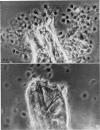Abstract
Normal plasma has been found to inhibit the platelet aggregation-inducing effect of collagen in a time consuming reaction independent of temperature. Collagen treated with serum and washed has reduced reactivity which can be restored to normal by treatment with 1.5 M sodium chloride. On the basis of this result, it is suggested that inhibition results from adsorption to collagen of a plasma component. The inhibitory plasma component is destroyed at 56°C, is unstable below pH 7, and migrates with the alpha globulins on starch block electrophoresis at pH 8.6. On the basis of ultrafiltration and sucrose density gradient ultracentrifugation studies, a molecular weight in the range of 330,000 is suggested and there may be an additional component of considerably greater size. Partial purification can be achieved by ion exchange chromatography. The purified fraction was completely inactivated by incubation with trypsin. Partially purified fractions inhibit cationic platelet aggregators such as collagen, polylysine, and hexadimethrine but do not affect anionic aggregators such as succinylated collagen and sodium stearate. Normal plasma and serum inhibit succinylated collagen and stearate. Stearate is inhibited by crystalline albumin and Cohn fraction IV-4. It is suggested that plasma proteins may regulate platelet adhesion to collagen and other vessel wall materials.
Full text
PDF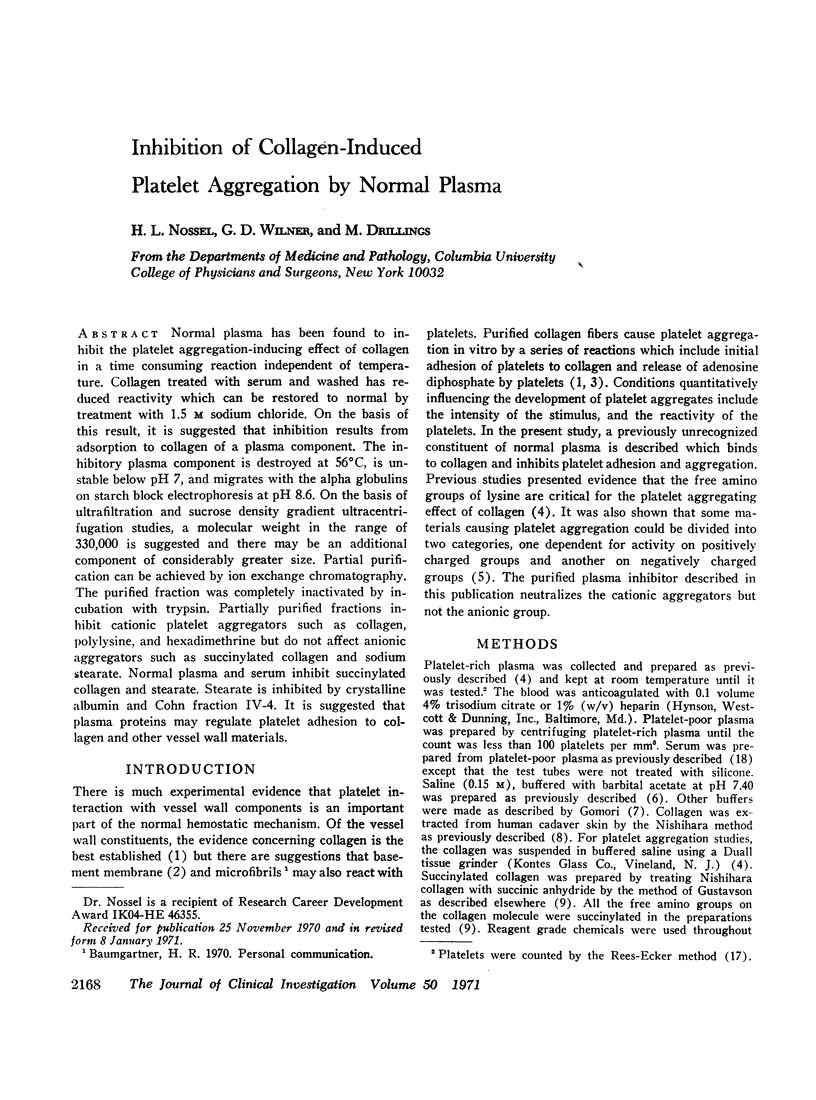
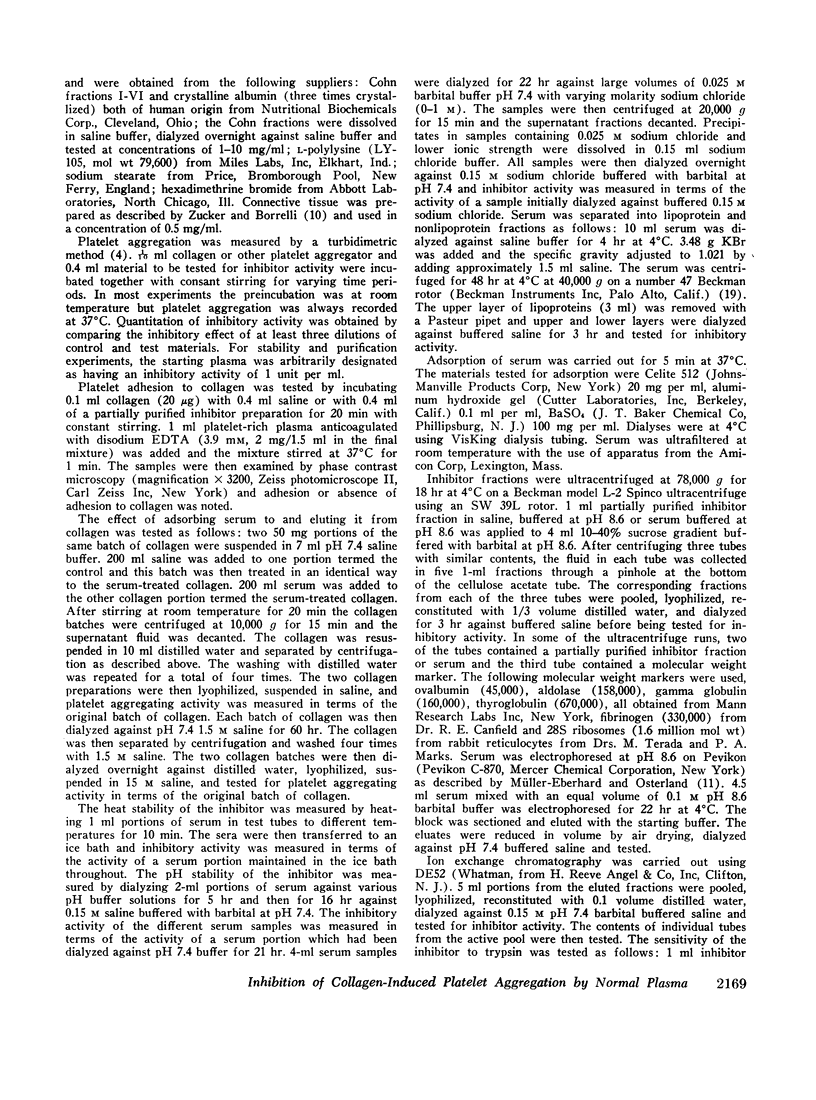
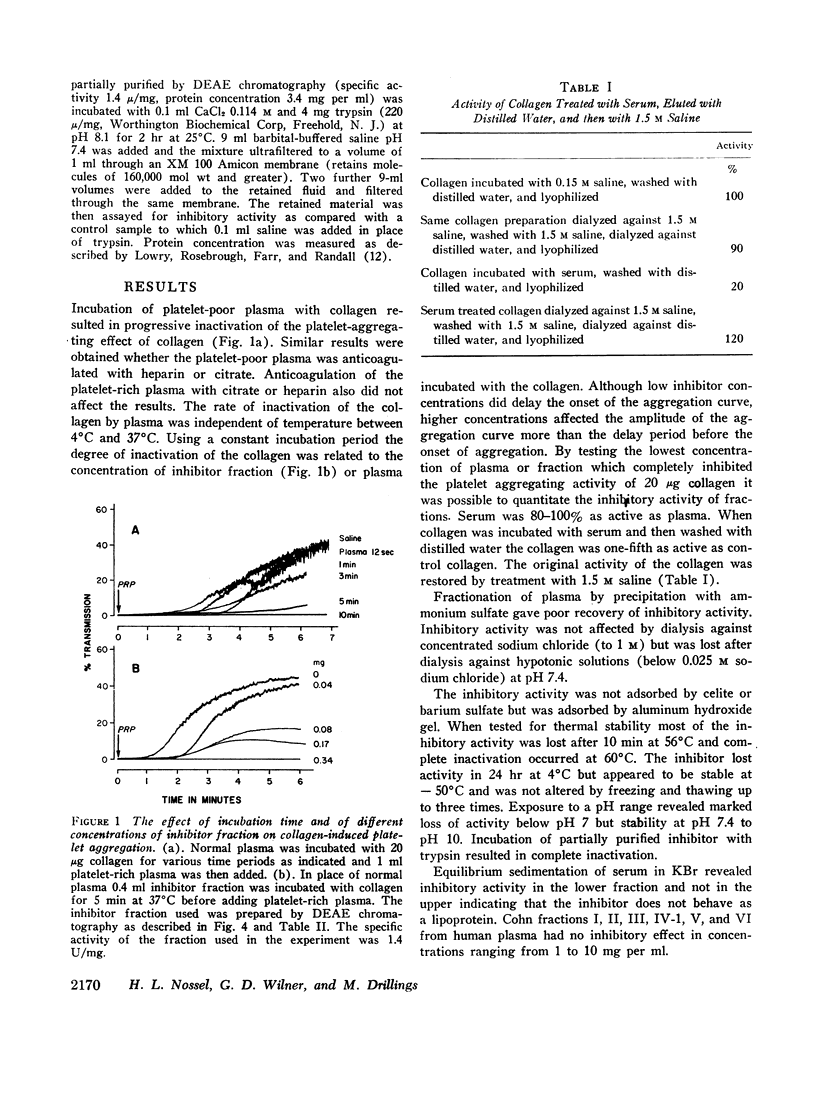
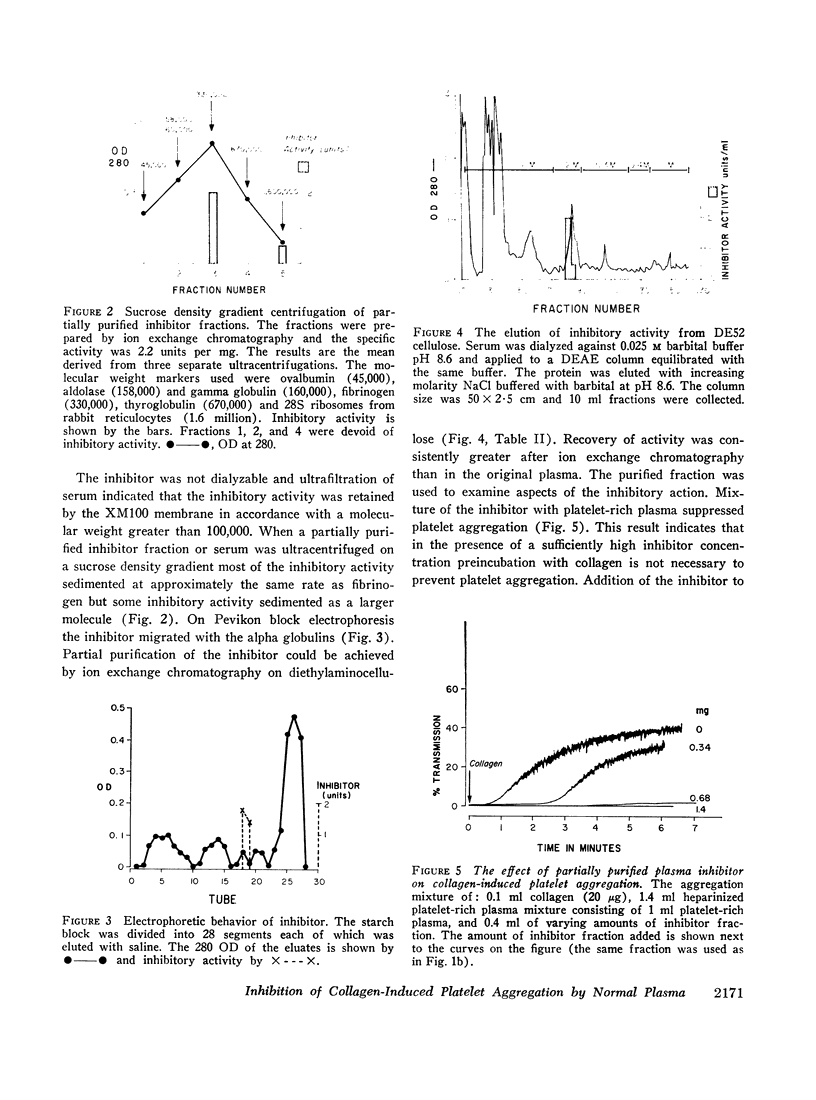
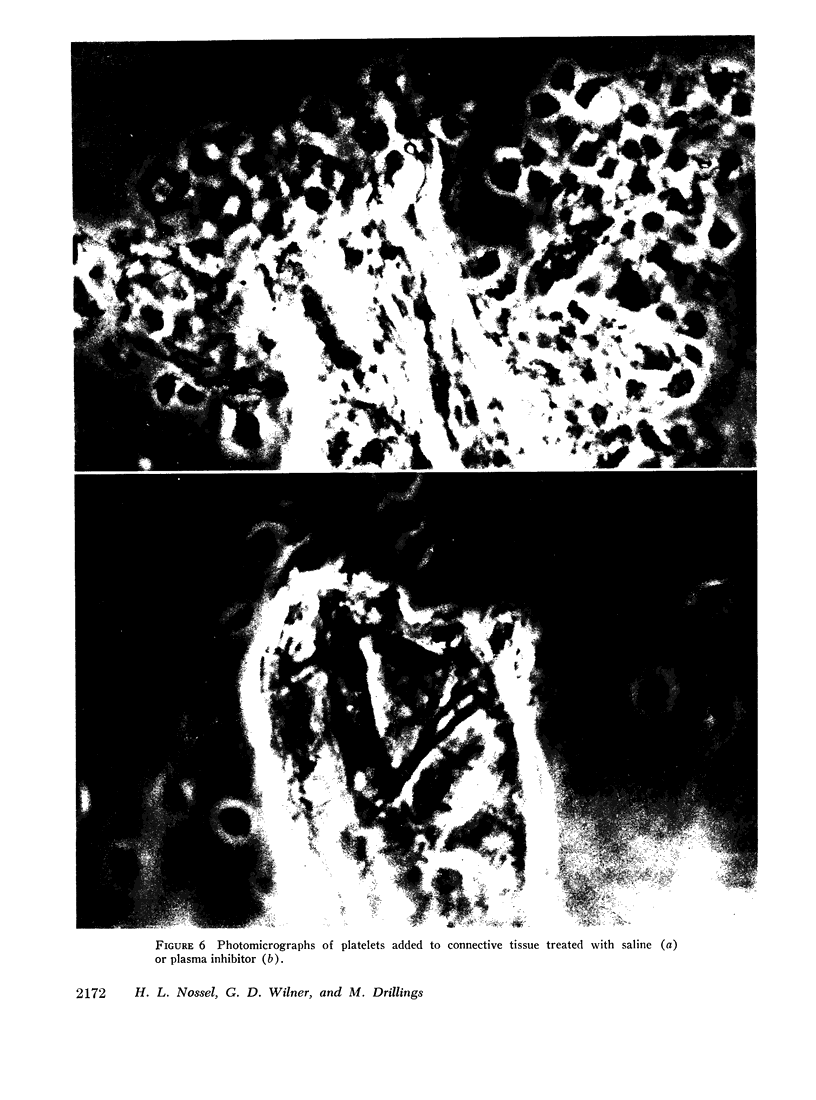
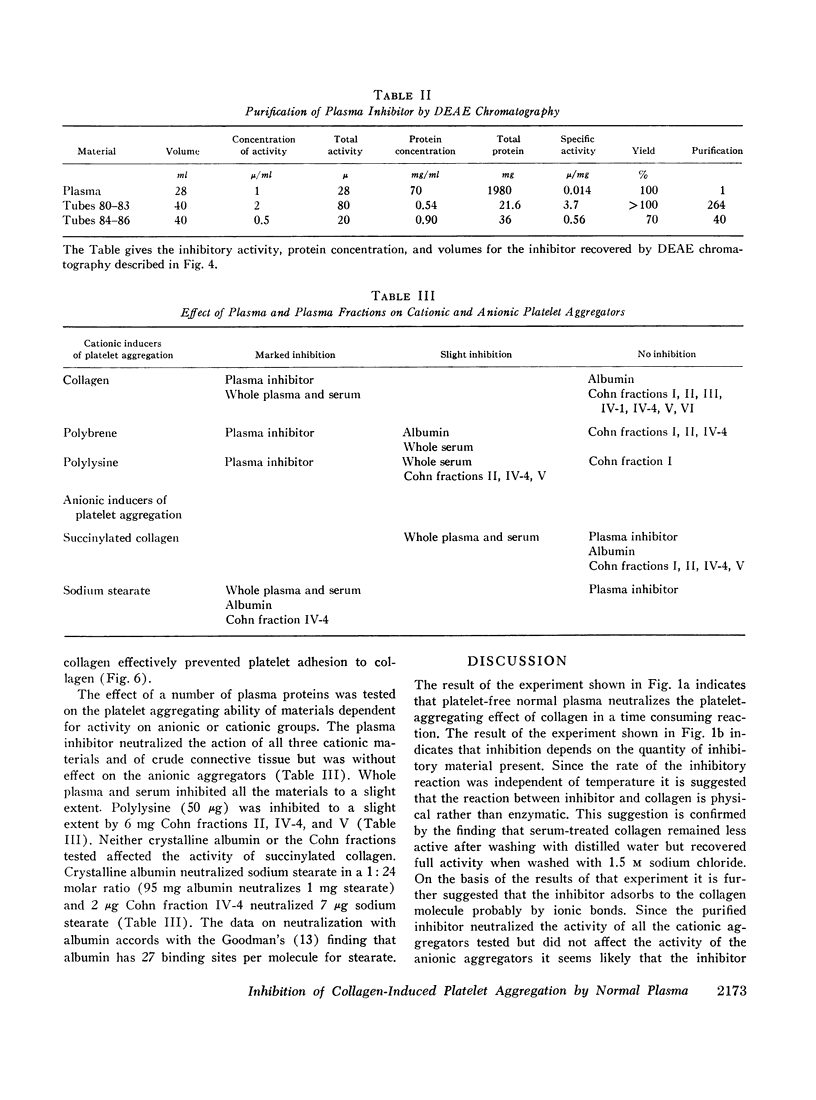
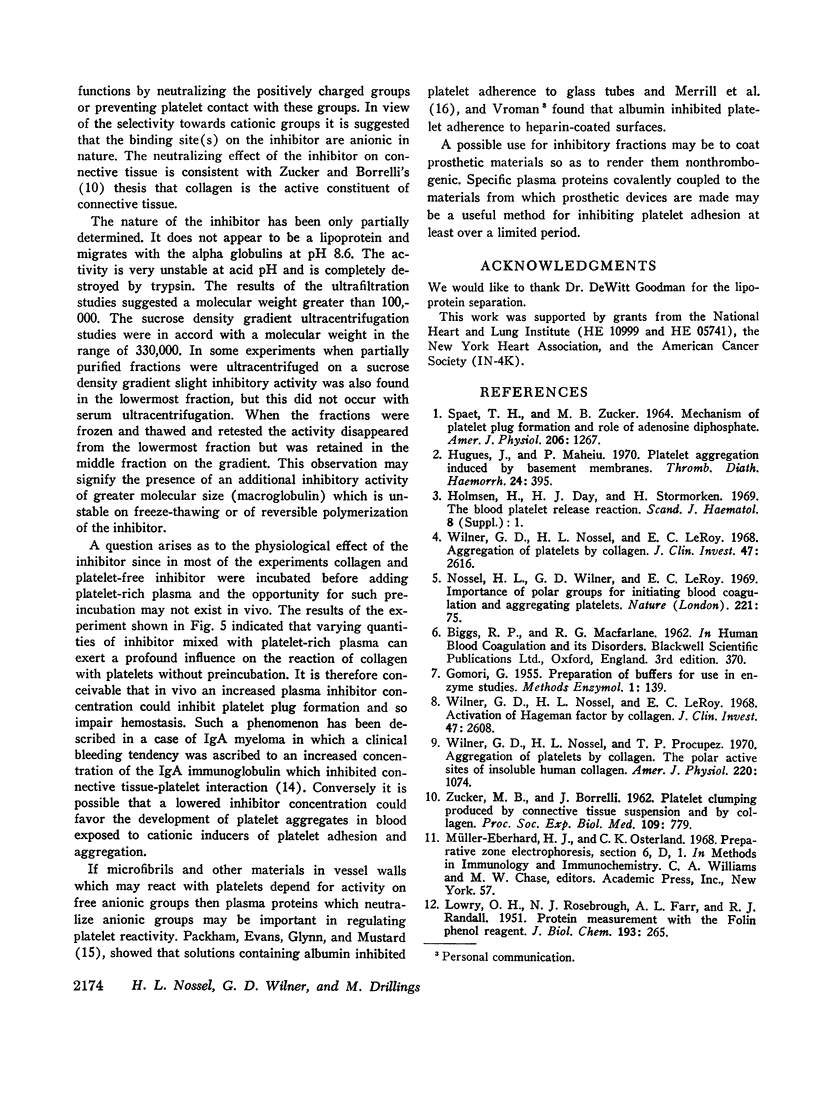
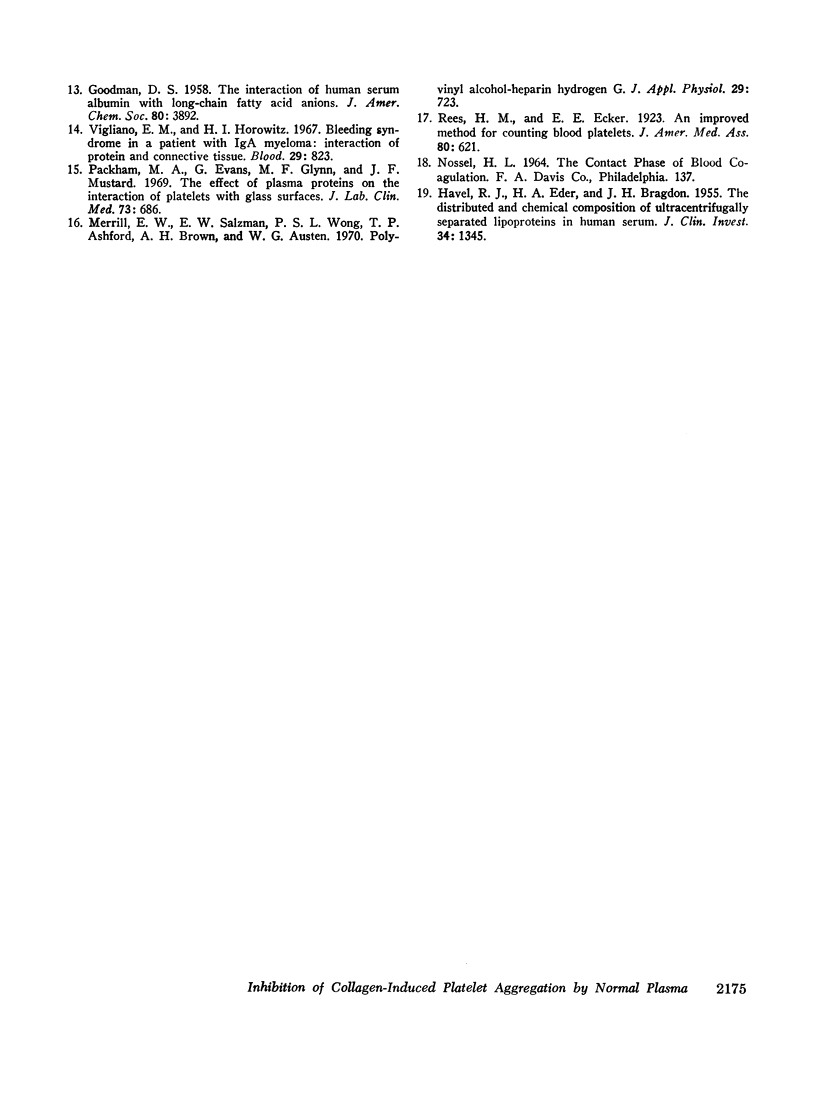
Images in this article
Selected References
These references are in PubMed. This may not be the complete list of references from this article.
- HAVEL R. J., EDER H. A., BRAGDON J. H. The distribution and chemical composition of ultracentrifugally separated lipoproteins in human serum. J Clin Invest. 1955 Sep;34(9):1345–1353. doi: 10.1172/JCI103182. [DOI] [PMC free article] [PubMed] [Google Scholar]
- Hugues J., Mahieu P. Platelet aggregation induced by basement membranes. Thromb Diath Haemorrh. 1970 Dec 31;24(3):395–408. [PubMed] [Google Scholar]
- LOWRY O. H., ROSEBROUGH N. J., FARR A. L., RANDALL R. J. Protein measurement with the Folin phenol reagent. J Biol Chem. 1951 Nov;193(1):265–275. [PubMed] [Google Scholar]
- Merrill E. W., Salzman E. W., Wong P. S., Ashford T. P., Brown A. H., Austen W. G. Polyvinyl alcohol--- heparin hydrogel "G". J Appl Physiol. 1970 Nov;29(5):723–730. doi: 10.1152/jappl.1970.29.5.723. [DOI] [PubMed] [Google Scholar]
- Packham M. A., Evans G., Glynn M. F., Mustard J. F. The effect of plasma proteins on the interaction of platelets with glass surfaces. J Lab Clin Med. 1969 Apr;73(4):686–697. [PubMed] [Google Scholar]
- SPAET T. H., ZUCKER M. B. MECHANISM OF PLATELET PLUG FORMATION AND ROLE OF ADENOSINE DIPHOSPHATE. Am J Physiol. 1964 Jun;206:1267–1274. doi: 10.1152/ajplegacy.1964.206.6.1267. [DOI] [PubMed] [Google Scholar]
- Vigliano E. M., Horowitz H. I. Bleeding syndrome in a patient with IgA myeloma: interaction of protein and connective tissue. Blood. 1967 Jun;29(6):823–836. [PubMed] [Google Scholar]
- Wilner G. D., Nossel H. L., LeRoy E. C. Activation of Hageman factor by collagen. J Clin Invest. 1968 Dec;47(12):2608–2615. doi: 10.1172/JCI105943. [DOI] [PMC free article] [PubMed] [Google Scholar]
- Wilner G. D., Nossel H. L., LeRoy E. C. Aggregation of platelets by collagen. J Clin Invest. 1968 Dec;47(12):2616–2621. doi: 10.1172/JCI105944. [DOI] [PMC free article] [PubMed] [Google Scholar]
- Wilner G. D., Nossel H. L., Procupez T. L. Aggregation of platelets by collagen: polar active sites of insoluble human collagen. Am J Physiol. 1971 Apr;220(4):1074–1079. doi: 10.1152/ajplegacy.1971.220.4.1074. [DOI] [PubMed] [Google Scholar]





